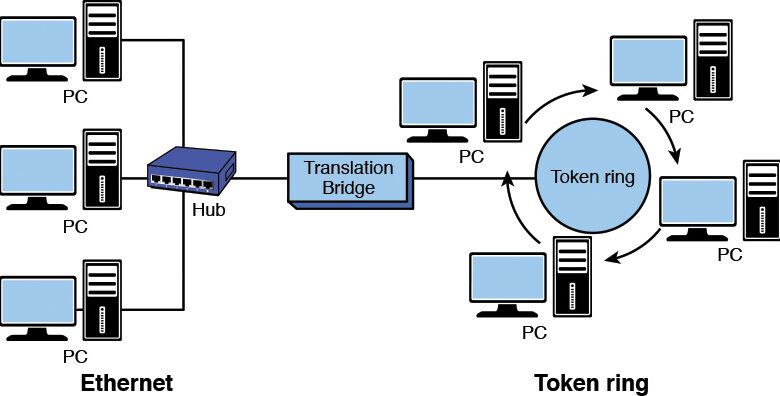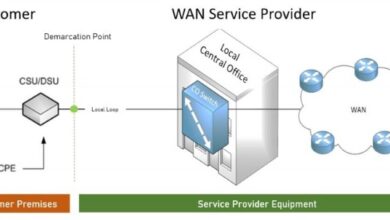“Understanding the Importance of Bridge in Computer Network: How They Improve Connectivity and Performance”

A bridge in computer network is an important device that helps connect different parts of a network, making data travel smoothly. It works at the data link layer (Layer 2) of the OSI model, where it filters and forwards data based on MAC addresses. This simple yet effective tool enhances the network’s performance by reducing traffic and improving the flow of information.
In today’s fast-paced digital world, a bridge in computer network plays a crucial role in ensuring reliable communication between different segments of a network. Whether it’s connecting local networks or managing high traffic, bridges help in splitting larger networks into smaller, more manageable segments, making them faster and easier to work with. In this blog, we’ll explore how bridges function, their types, and their importance in modern network setups.
How Does a Bridge in Computer Network Improve Performance

A bridge in computer network helps improve performance by managing traffic and dividing large networks into smaller, easier-to-handle segments. This process is known as network segmentation. Smaller segments mean less data for each segment to handle, reducing congestion and speeding up the flow of information.
When there is less traffic on each segment, the devices can communicate faster. This is important because it prevents slowdowns and ensures that all devices in the network can access data when they need it. The bridge also filters data, making sure only relevant packets are forwarded to each segment. This boosts overall network efficiency.
Bridge in Computer Network vs. Switch: What’s the Difference
Both a bridge in computer network and a switch work at the data link layer, but they are slightly different in how they operate. A bridge connects two network segments, filtering traffic between them. It looks at MAC addresses to decide whether or not to forward data packets to other segments.
A switch, on the other hand, is a more advanced device. It connects many devices in a network and can handle a lot more traffic. Unlike a bridge, a switch can connect multiple devices at the same time, forwarding data more efficiently. However, bridges are often simpler and used when only a few network segments need to be connected.
The Role of a Bridge in Computer Network for Network Segmentation

One of the main uses of a bridge in computer network is to help segment a large network into smaller, more manageable parts. This process is known as network segmentation. By doing this, the bridge reduces the overall traffic on each segment, improving performance.
When a network is too large, all devices have to share the same bandwidth, which can slow things down. With network segmentation, a bridge divides the network into smaller segments, making it easier for devices to communicate without slowing down. This is especially useful in busy networks with a lot of data transfer.
How Does a Bridge in Computer Network Help in Traffic Management
A bridge in computer network plays a big role in managing network traffic. It does this by using its MAC address table to filter and forward data packets only to the segment where they need to go. This prevents unnecessary data from being sent to the entire network.
Benefits of Traffic Management with a Bridge:
- Reduces Congestion: By sending data only to the right segment, the bridge reduces network traffic and prevents slowdowns.
- Improves Efficiency: It ensures that data is delivered where it’s needed, without unnecessary delays.
- Better Security: The bridge can filter out unwanted data, making the network more secure by preventing unnecessary access.
By controlling traffic flow and ensuring efficient data forwarding, a bridge can improve the overall performance and reliability of a network.
Learning and Forwarding: How Bridges Handle Data in a Network

A bridge in computer network learns where devices are located by tracking the MAC addresses of incoming packets. As the bridge observes more data traffic, it builds a table that matches MAC addresses to the network segments. This table helps the bridge decide where to forward data packets.
When the bridge receives a data packet, it checks the MAC address to see if the destination is on the same network segment. If it is, the bridge will not forward the packet. But if the destination is on a different segment, the bridge will forward the packet to the correct segment.
Conclusion
In conclusion, a bridge in computer network is a very useful tool for improving the way networks communicate. It helps connect different network segments, reduces traffic, and ensures data goes only where it needs to. By using a bridge, networks can work faster and more efficiently, preventing slowdowns and congestion.
To sum it up, a bridge in computer network is a simple yet powerful device that plays a big role in organizing and improving network traffic. Whether you are connecting devices within the same area or across long distances, bridges ensure that everything works without delays.
FAQs
Q: What is the main function of a bridge in a computer network?
A: The main function of a bridge is to connect different network segments, allowing devices to communicate smoothly and reduce network traffic.
Q: How does a bridge help improve network performance?
A: A bridge helps by reducing congestion and making sure data only goes to the segment where it is needed, speeding up the network.
Q: What is the difference between a bridge and a switch?
A: A bridge connects two segments, while a switch connects multiple devices and can handle more traffic at once.
Q: Can a bridge be used in a wireless network?
A: Yes, a wireless bridge can be used to connect wireless networks and extend the range of your network.
Q: Why is the Spanning Tree Protocol (STP) important for a bridge?
A: STP helps prevent loops in the network by blocking extra paths, ensuring stable and reliable network connections.




